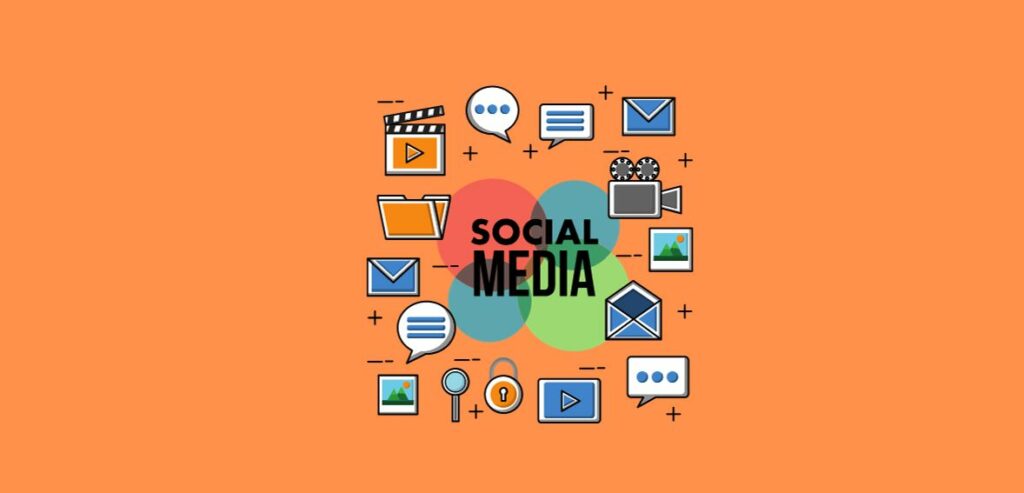Are you looking to improve your social media marketing results? Want better returns on your investment in social media? You’re in luck—it’s simpler than you might expect. The number of people using social media is skyrocketing, with over 4.8 billion active users currently. The growth of this number is expected to continue. Consequently, businesses of different sizes are investing more in their social media ad campaigns.
Nevertheless, not every business is achieving the desired outcomes from these efforts. The key to improving results lies in having a basic understanding of what goes behind SMM campaigns. To achieve the desired returns, it is vital to know where you might be going wrong with your social media activities. In this article, we aim to assist you by providing some insights into these mistakes and guiding you on how to avoid them.
Understanding Social Media Marketing
SMM involves creating content for platforms such as Instagram, Facebook, LinkedIn, and others to promote your products or services, build a community with your target audience, and drive traffic to your business. The world of media is constantly changing – new features and platforms are always around the corner, emerging regularly.

At its core, SMM is about engaging with your audience and customers in the platform where they socialize both with each other and with your brand.
Although SMM has a great impact on business growth overall, the specific strategy you choose will depend on which networks your audience uses most frequently. Each platform has its features; for example, TikTok works well for short video content, while Instagram is ideal for captivating posts and stories.
Why Do Social Media Campaigns Fail?
There are still misunderstandings among business owners regarding how social media marketing works. Some mistakenly view it as a billboard online, where all you have to do is just place your brand logo on a pole. While others believe that having some followers automatically leads to sales. This misconception contributes to the challenges faced by 46% of marketers who struggle to connect their social media efforts with revenue generation for their businesses. The truth is that social media requires a strategic approach like any other marketing tool. Without a defined plan, it can easily become a waste of resources, including money, energy, and time.
Many social media marketing efforts falter when businesses don’t invest enough time in planning. Regular posting, engaging with comments, and maintaining an active presence can increase your visibility and interactions. To see improvements, you must allocate time to manage your social media pages. Another crucial factor is focus. Achieving success on social media demands a clear understanding of your brand, your target audience, and your communication strategy with them.
Top 7 Social Media Marketing Mistakes Made During Social Media Marketing

There are a lot of ways a campaign can go sideways for a business, and it can be due to shallow work from the writer’s side, the editor’s side, the graphic designer’s site, the campaign manager’s side, or by the project manager himself. There are a lot of components involved–sometimes the keyword isn’t right, and sometimes, the positioning of the campaign–so understanding each section is important. Here are seven of the most common social media marketing mistakes for you to start with:
1. Using all Social Media Channels and Posting the Same Content
One of the most common social media marketing mistakes is when a brand posts the same content, in the same style, on multiple social media platforms. While it’s okay to share the same content on different sites, it’s essential to tailor the message to fit each platform’s unique audience. For example, the people using TikTok have different interests and behaviors than those on Facebook. Each platform, like LinkedIn for professional topics or Facebook for middle-aged users, has its own characteristics and tools.
A smarter approach is to choose a few platforms that best match your target audience and focus on creating high-quality content for those. Even if you share the same content, customize your message to resonate with each platform’s users.

Here are some examples of social media marketing strategies for different platforms:
- X (Formerly Twitter): Share short excerpts from articles, engage with customer tweets, and keep an eye on trending topics in your field. X could be valuable for all the B2C and B2B companies that want to target a wide range of audiences.
- YouTube: YouTube ranks as the world’s second most popular website and is often cited as the top platform for fostering community. Beyond its massive popularity, people also spend a lot of time on YouTube due to its focus on long-form videos.
- Instagram: Instagram is the best app out there to showcase your B2C product line with photos, interesting reels, posts, and stories with daily updates that reflect your company culture. Instagram is a great platform to target millennials and GenZs.
- Threads: This platform is all about sparking conversations through brief text posts. What sets Threads apart is its ad-free experience. Although Threads is relatively new, most of its users are comprehended to be young teens and young college-going students who are already very active on Instagram.
- Facebook: With Facebook, you can share detailed updates, interact with customers through the marketplace, and host live Q&A sessions, among other features. B2C brands can effectively use Facebook to target middle-aged audiences (between 35 and 44).
- LinkedIn: LinkedIn serves as the professional side of social media, distinct from more casual platforms like Facebook. It’s the go-to place for professionals who want to connect with others in their field and explore career opportunities. This makes LinkedIn perfect for B2B businesses aiming to find influential people in their industry and create a specialized community.
- TikTok: B2C and B2B businesses can create quick video clips to showcase products, connect with a younger audience and other businesses, and stay updated on the latest trends. TikTok is the right platform to target a wide range of audiences, but the user base is leaning more toward 16 to 24 GenZs.
2. Not Using User-Generated Content (UGC)
For an effective SMM campaign, don’t rely solely on your own posts about your brand. Encourage your audience to share their own experiences and stories—that’s UGC. UGC holds significant sway because it serves as social proof. People often trust fellow consumers more than brand advertisements. By showcasing UGC on your social platforms, you build trust and credibility, encouraging more people to purchase from you.
Once you have UGC, make the most of it. Share it on your profile, feature it in stories, and actively engage with it. This boosts its visibility and impact and can help a business generate 29% more conversions than campaigns that do not use UGC content. A top tip for increasing UGC is to host a giveaway or contest that encourages users to post about your brand. Creating a branded hashtag challenge can also help your content gain traction. Additionally, collaborating with micro-influencers can be a fruitful way to generate more UGC.
3. Posting Without Proper Schedule
One common reason brands struggle with consistent posting is the absence of a content plan, often called a content or editorial calendar. This tool allows businesses to map out their social media posts month by month, including industry news, seasonal promotions, or upcoming sales events.

To avoid gaps in your content, you can use UGC or BTS content from your business. Monthly content calendar ideas can also help fill these spaces effectively.
Here are some basic steps to get started with your content planning:
- Decide on posting dates and times.
- Identify the platforms where you’ll post.
- Determine the visual format for each post.
- Make interesting captions for each post in line.
- Gather links to any necessary assets.
Consider your preferred planning timeline. Do you like to plan ahead, a month or a week? For longer-term planning, tools like ClickUp or Asana can help you organize the data better. For ongoing content planning, spreadsheets like Google Sheets or Excel also work well. These tools let you manage your content digitally, use color coding for clarity, and easily collaborate with your team.
After setting up your calendar, it’s essential to review your platform analytics to understand your performance. For example, you might find that your LinkedIn audience is most active in the morning, while your Instagram or X followers engage more in the afternoon. Keep these patterns in mind when scheduling your posts. If the analytics from individual platforms are unclear, a quick online search can provide general recommendations for optimal posting times. However, remember that audience behavior can vary.
Other factors to consider in your analysis include:
- The most active days of the week.
- Peak engagement times each day.
- Your posting frequency.
- How different post formats, like videos versus text, impact engagement.
After establishing posting guidelines based on this analysis, continue to monitor your analytics and adapt your strategy accordingly.
4. Overlooking Direct Engagement
One frequent misstep in social media management is neglecting to interact with your audience. However, it is one of the top social media marketing mistakes that is easily avoidable. Remember, the “social” in social media emphasizes the need for interaction. Your role goes beyond just posting content; it also involves engaging with users. Allocate time daily to reply to comments, address queries, and ensure that users can easily reach out to your brand through social platforms. Meeting these expectations is crucial because people anticipate meaningful interactions with brands on social media.
Additionally, engage with other brands and pages that align with your interests. Active participation on social media enhances your page’s visibility, helping you cultivate a larger and more engaged audience.
A Thing To Consider: To connect well with your audience on social media, pay attention to their feedback, respond promptly (even to those “unhappy” comments), create a friendly interaction, utilize visuals, provide valuable content, maintain brand consistency, and partner with influencers. These practices not only strengthen relationships but also boost brand visibility and drive business outcomes.
For example: Some social media channels on YouTube and Instagram are now making it a point to reply to every comment possible in an interactive and personalized way, even though these comments can count to thousands. This strategy encourages the audience to comment more–which in turn means more engagement.
5. Buying Fake Followers, Comments, and Views

If you’re a small business aiming to increase engagement or boost credibility on social media channels, buying followers, comments, or views might seem tempting. It’s a quick way to inflate your page’s following count and credibility. However, this approach comes with significant drawbacks that many overlook.
Buying followers is akin to a blurred assurance. While you might see a sudden rise in followers, these are often bot or inactive accounts. They won’t interact with your content, share your posts, or promote your brand. This not only skews your performance data but also provides no lasting value. Over time, you’ll notice that the initial spike in metrics doesn’t translate into genuine engagement.
Moreover, platforms like Instagram and X actively work to identify and remove fake or inactive accounts. Buying followers violates community guidelines on many social media platforms, putting your account at risk of penalties. In essence, relying on fake communities undermines the essence of social media – authentic engagement. It’s more beneficial to invest time and effort into growing your audience organically, seeping in a genuine community that truly wants to follow your brand’s values.
6. Making False Claims or Presenting Wrong Data
A prevalent error in social media marketing is posting without proper or inaccurate research. Some businesses believe that periodical posts will suffice, no matter if the figures are right or wrong. But consistency and relevance matter, especially for consumer-centric industries like food and healthcare, where the consumer is now more information-conscious than ever. With 60% of consumers more health-conscious due to the pandemic, integrating well-researched, engaging content about healthy lifestyles that highlights the benefits of your product along the way can significantly enhance your social media strategy.
Effective research figures and facts that align with your niche on SMM campaigns go beyond mere brand exposure. To truly thrive online, you must devise a strategy centered on audience needs and the value your product offers. So, before uploading content, focus on key points of what your audience wants and what you (your product) can give them. Remember that Misinformation on social media can tarnish a company’s reputation, resulting in decreased sales, lost customers, and potential legal consequences. Such incidents can also negatively impact the brand’s image in the long run.

7. Balancing the Content
People follow brands on social media for various reasons – valuable content, personal connections, entertainment, or learning opportunities. While promoting your brand is essential, excessive self-promotion can deter followers.
Consider this guideline for a balanced posting approach; out of 10 weekly posts:
- Five should share relevant content from others.
- Three should offer valuable content from your brand without a sales pitch.
- Two should showcase fun, personal content to humanize your brand.
Avoid the misconception that any content is better than none. Random posts, like sharing a pet photo, can lead to follower attrition. Instead, adhere to a consistent editorial calendar and prioritize quality. Effective social media content is not only engaging and pertinent but also well-crafted with a clear message. Additionally, incorporating visually appealing elements like videos or graphics can enhance engagement.
Conclusion

In the ever-evolving world of social media marketing, success hinges on a well-thought-out strategy and genuine engagement. From tailoring content to suit specific platforms to fostering authentic interactions, the path to effective social media marketing is laden with potential pitfalls.
By avoiding common social media marketing mistakes like neglecting personal engagement, relying on fake followers, or posting inaccurate information, businesses can forge a more genuine connection with their audience. Remember, the essence of social media lies in building trust, delivering value, and maintaining consistency. By steering clear of these errors, businesses can unlock the full potential of their social media efforts.
Frequently Asked Questions
Q: What common mistakes do digital marketers often make?
A frequent error among digital marketers is rushing their campaigns without adequate planning. This haste can lead to sending out incorrect information, targeting the wrong audience, and ultimately, disappointing returns on investment. Taking time to strategize is crucial for success.
Q: Which social media platform has the highest engagement?
Currently, Facebook leads in engagement with an average of 2.9 million monthly users, closely followed by YouTube at 2.5 million. These platforms offer great opportunities for reaching and interacting with a vast audience.
Q: What are some common mistakes made on social media?
Grammatical errors are prevalent on social media, including additions, omissions, misformations, and misorderings in language. These mistakes often arise because users might not be fully aware of proper English structure or may inadvertently write with errors.
Q: Which social media platform offers the best ROI?
Instagram stands out as the top performer in terms of ROI among social media platforms. Marketers consistently rank Instagram as the leading platform for both ROI and engagement, delivering high-quality leads and featuring a content algorithm that recommends the most relevant posts.

